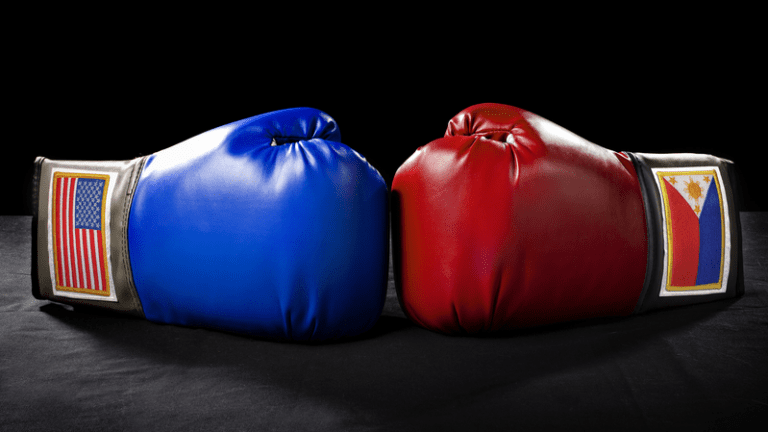The place of Western boxing in the context of martial arts and self-defense has long been a topic of much debate. Webster’s dictionary defines martial arts as “systems of self-defense originating in East Asia, such as karate or kung fu, also engaged in for sport.” By this definition, boxing would not be classified as a martial art solely because it did not originate in East Asia, e.g., China, but in the West.
As a practitioner of both boxing and martial arts (as defined by Webster), I have been able to test the self-defense aspects of both disciplines in a controlled environment. Of course, sparring is not the same as fighting in the streets, but it does give me something to go on.
I have found boxing to be “highly-effective” against skilled martial artists with no formal boxing training. There are quite a few reasons for this. Let us start with the differences between how both disciplines approach “offense” and “defense.”
Differences in Offensive Tactics
- Origin of the punch: In East Asian martial arts, punches originate at the hip from a chambered position. In boxing, punches are delivered from near the face. A boxing jab, for instance, will reach an opponent’s face much quicker than a reverse punch starting at the hip. A martial artist who spars with his hands up like a boxer will have less experience throwing punches this position than a boxer. There is truth to the old sports saying that you play, or in this case fight, the way you practice.
- Attack strategy: Many styles of karate or kung fu emphasize attacking one level at a time. In other words, either you are attacking the head or you are attacking the body the majority of the time. Skilled boxers routinely vary their levels of attack. This means that their opponent has to constantly shift their attention to protect various parts of their anatomy.
- The use of flashy techniques: While flashy moves look good in a movie, they are pretty useless against a trained boxer who will just side-step a flying kick or crash into you when you turn your back to do a spin kick.
Differences in Defensive Tactics
- Stark: Boxers tend to emphasize avoiding attacks versus blocking attacks. Skilled boxers will often slip punches or duck underneath them instead of blocking them. This leads to their opponent being off-balance and opens up many counterattack possibilities. In addition, throwing a punch and missing the mark is much more tiring than having your punch blocked. The other big problem with blocking as opposed to evading is that a punch or kick thrown with high momentum can still knock you over even if you block it!
Differences in Movement
- Footwork: Traditional martial arts include many different stances that practitioners take to begin a fight. Although you can switch from one stance to another, this is not the same as boxing footwork. Boxers focus on developing good movement and footwork, particularly lateral footwork, and spend far less time practicing static stances. It is much more difficult to hit a moving target than a static one. In addition, footwork makes it easier to surprise opponents with attacks from different angles. The footwork advantage goes to boxing.
- Conditioning: I often find a large gap between the physical conditioning of a boxer and that of a typical karate or kung fu practitioner. Boxers have a well-deserved reputation for being in great physical condition. On the other hand, physical conditioning is not often a high priority for martial artists. Unfortunately, whether in the ring or in the streets, there is no guarantee that a fight will end early. Therefore, running out of steam can be a recipe for disaster.
So Is Boxing a Martial Art?
Does all of this mean that I consider boxing to be a martial art? Or that I consider boxing to be superior to martial arts? No on both counts. There is one important area where martial arts originating from East Asia clearly outshines boxing. This is in the cultivation of mind and spirit.
Boxing emphasizes the develop of physicality. You have to develop your mind and spirit outside the boxing gym. This is not necessarily the case with martial arts, such as karate or kung fu, where these elements are often included in your training.
The study of traditional martial arts expands the mind. Learning about various cultures, history, traditional, languages, as well as the physical martial arts techniques, arguably develops the intellect to a greater degree than boxing. The development of internal energy, sometimes called Ki or Chi, which I include in the mind aspect is also missing in boxing. In addition, meditation or mindfulness is often a part of traditional martial arts.
CoachUp is the safest and easiest way to find a coach for personalized training. With our 100% money-back guarantee and vetted coaches, anyone can achieve their full athletic potential. Find your perfect coach today and become the athlete you want to be!
How useful was this post?
Click on a star to rate it!
Average rating 4.5 / 5. Vote count: 4
No votes so far! Be the first to rate this post.





One Response
Very interesting. Thanks. Merriam Webster’s 11th ed. and recently updated online, the official dictionary of the US publishing industry, has martial art as “any of several arts of combat and self-defense (such as karate and judo) that are widely practiced as sport.” No mention made any longer of Asian descent. There are all kinds of “Webster’s dictionaries” out there, because it’s not a protected name. But Merriam Webster is one authority. Thanks again.